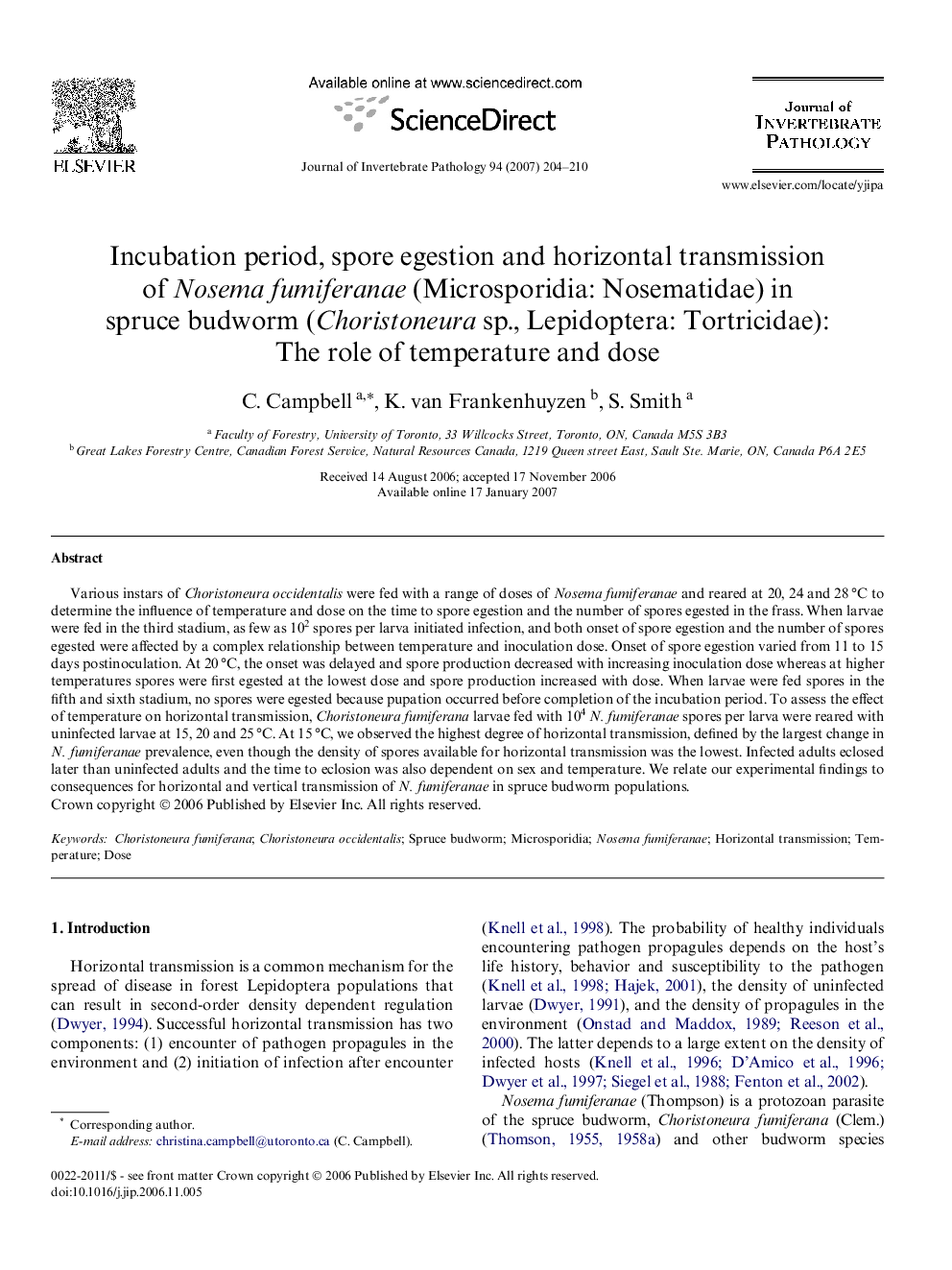| Article ID | Journal | Published Year | Pages | File Type |
|---|---|---|---|---|
| 4558793 | Journal of Invertebrate Pathology | 2007 | 7 Pages |
Abstract
Various instars of Choristoneura occidentalis were fed with a range of doses of Nosema fumiferanae and reared at 20, 24 and 28 °C to determine the influence of temperature and dose on the time to spore egestion and the number of spores egested in the frass. When larvae were fed in the third stadium, as few as 102 spores per larva initiated infection, and both onset of spore egestion and the number of spores egested were affected by a complex relationship between temperature and inoculation dose. Onset of spore egestion varied from 11 to 15 days postinoculation. At 20 °C, the onset was delayed and spore production decreased with increasing inoculation dose whereas at higher temperatures spores were first egested at the lowest dose and spore production increased with dose. When larvae were fed spores in the fifth and sixth stadium, no spores were egested because pupation occurred before completion of the incubation period. To assess the effect of temperature on horizontal transmission, Choristoneura fumiferana larvae fed with 104N. fumiferanae spores per larva were reared with uninfected larvae at 15, 20 and 25 °C. At 15 °C, we observed the highest degree of horizontal transmission, defined by the largest change in N. fumiferanae prevalence, even though the density of spores available for horizontal transmission was the lowest. Infected adults eclosed later than uninfected adults and the time to eclosion was also dependent on sex and temperature. We relate our experimental findings to consequences for horizontal and vertical transmission of N. fumiferanae in spruce budworm populations.
Related Topics
Life Sciences
Agricultural and Biological Sciences
Ecology, Evolution, Behavior and Systematics
Authors
C. Campbell, K. van Frankenhuyzen, S. Smith,
